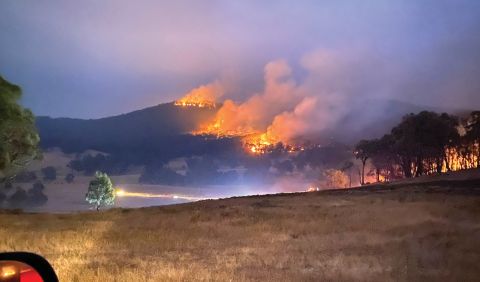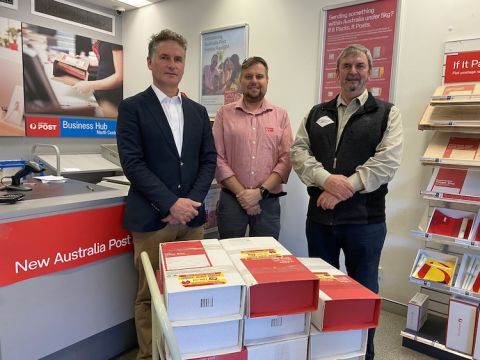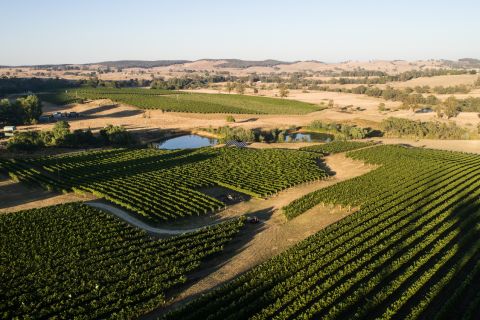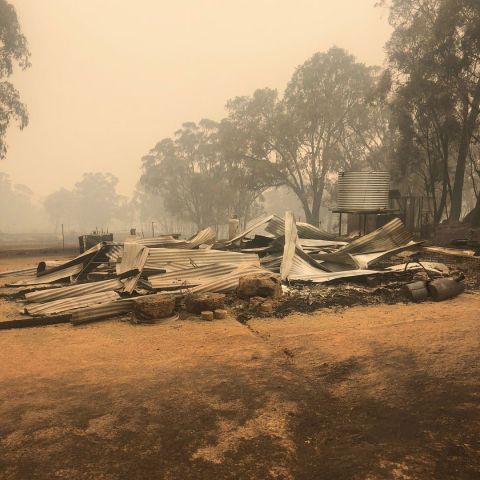Snowy Mountain magic

One of the more interesting wine regions you have never heard of? See also Tumbarumba tasted. A version of this article is published by the Financial Times.
It all started with the recent terrible bushfires in Australia. The worst-affected wine regions were the Adelaide Hills, Kangaroo Island off the South Australian coast and the delightfully named Tumbarumba in the hills halfway between Melbourne and Sydney (roughly in the middle of this World Atlas of Wine map of southern Australia). In one of my weekly newsletters in January I urged wine drinkers to support the Australian wine industry by buying its produce.
The response of Canberra wine merchant and Tumbarumba wine producer Bill Mason was to offer to assemble a collection of recently released Tumbarumba wines for me to taste, hoping to increase recognition of this highly distinctive grape-growing region. He persuaded Australia Post to cover shipping costs and invited local producers to submit samples, which were vetted by a some of the region’s most experienced tasters. The result was the arrival, over several weeks but in time for April Fool’s Day, of 33 bottles in my King’s Cross flat in red and white Australia Post two-packs. (In the last few years there have been leaps and bounds in designing secure and recyclable cardboard packaging for wine bottles, I’m delighted to report. Farewell polystyrene.)
All this effort was not in vain because I was hugely impressed by some of the wines, especially the Chardonnays. Australia has a way with twenty-first century Chardonnay anyway (by which I mean they are so much slimmer than the notoriously flabby Chardonnays of the Bridget Jones era) but some of them can be just a bit too austere and fruitless. The best of these Tumbarumba Chardonnays were just right: whistle-clean, well constructed for several years’ development in bottle, and packed full of interesting, savoury flavour. Oh, and cheaper than comparable white burgundy.
Tumbarumba is on the west of the Great Dividing Range in the foothills of the Snowy Mountains of New South Wales, whose highest peak Mount Kosciuszko is Australia’s highest mountain. It’s a small, fairly young wine region. Only about 300 ha (740 acres) of vines are planted, mostly at elevations of between 550 and 800 m (1,800–2,625 ft) – much higher than most European vineyards. Vines have to face north to stand a chance of ripening. The climate may be very similar to that of Champagne and Burgundy, with a bit more brilliant sunlight and cooler nights, but Tumbarumba is very different from any European wine region I can think of in that so much of its produce is plundered by raiding parties from outside the region. Even today there is only one winery there.
The first two commercial vineyards were planted in 1981 and such was the obvious potential of the region that in 1992 a workshop was held by the Ministry of Agriculture and one of Australia’s biggest wine companies, then called Southcorp, to encourage more vine planting.
The result was a small group of family-owned grape growers with a series of supply contracts to big wine companies outside the region, including the two that have dominated the Australian wine industry for so long – now called Treasury Wine Estates (once Southcorp, with such brands as Penfolds) and Accolade (Hardys, etc). They recognised the unusual, and valuably refreshing, nature of grapes from this relatively cool, wet region.
But many of these contracts came up for renewal in the mid 2000s when Australian wine was suffering one of its periodic existential crises. There was a national grape glut. So the two big companies divested themselves of their investments in this part of the country, did not renew their contracts and now simply buy grapes as and when.
The region is cool enough to be suitable for growing grapes for sparkling wine and it was Hardy’s celebrated sparkling winemaker Ed Carr who led the company to Tumbarumba in the mid 1990s. My shipment contained a bottle of his stunning 2011 traditional method sparkling Chardonnay grown in the Courabyra vineyard above. Early 21st century vintages of the company’s top Chardonnay, Eileen Hardy, had a dollop of Tumbarumba fruit in them. As for their big rivals, Penfolds’ luxuriously priced Chardonnay Yattarna (almost £100 a bottle) has regularly contained a portion of Tumbarumba fruit since 1996. Penfolds Bin 311 (closer to £24), was made exclusively of Tumbarumba grapes from 2005 to 2016. From 2017 other cool regions’ produce was admitted into the blend but the 2019 vintage of Penfolds’ Cellar Reserve single-vineyard Chardonnay is all from Tumbarumba.
These Chardonnays have been the highest-profile ambassadors for Tumbarumba’s charms, but the region grows other varieties: particularly the fashionable Pinot Noir, but also Pinot Gris, Sauvignon Blanc, Prosecco (renamed Glera by the Italians), Riesling, Pinot Meunier, Gamay and even the Grüner Veltliner of Austria.
Alex McKay was at one time Hardy’s man in Tumbarumba before running Collector Wines, producers of particularly fine Tumbarumba Chardonnay but based just outside Canberra, a three-hour drive away (nothing by Australian standards). He reckons almost a third of Tumbarumba’s grapes are bought to add a little finesse to blends based on the produce of workhorse vines in Riverina in the hot interior to the north west, but the majority of the grapes find their way into wines labelled Tumbarumba. Many of them are trucked to wineries outside the region, in the wine district around Canberra, Riverina, or even the Hunter Valley well to the north of Sydney.
After the departure of the two big companies, McWilliams of Riverina became the biggest buyers of Tumbarumba fruit and were still making quite a range of Tumbarumba wines until they went into administration last January. McWilliams’ head winemaker Jim Brayne was particularly keen on Tumbarumba and it is his son Adrian who runs the region’s only winery that processes about a sixth of all of the region’s grapes. Adrian, whose 2019 crop had been severely hit by hail, was particular badly hit by the fires on New Year’s Eve and lost both his home and the vineyards that produce grapes for his own label, Obsession, whose 2018 was my favourite Tumbarumba Pinot Noir. It will probably be another five years before these burnt vineyards are able to produce another crop (see pictures in Tumbarumba tasted).
The winery was not too badly burnt and should be able to process the grapes grown by his clients, but most of them had no crop at all this year, such were the effects of both fire and smoke on the grapes. Tumbarumba really does deserve to be recognised as more than a provider of an ingredient in a big company’s blend.
This may be the first time I’ve written a profile of a wine region without ever having been there. A sign of things to come perhaps?
Highly recommended Tumbarumba wines
I scored all of these at least 17 out of 20, a very high score for me. I scored only two of the 33 wines I tasted less than a very respectable 16.
- Courabyra, 805 2011 sparkling wine
- Kosciuszko Chardonnay 2018
- Mada Chardonnay 2018
- Coppabella, Sirius Chardonnay 2018
- Collector Wines, Tiger Tiger Chardonnay 2017 and 2016
- Obsession Pinot Noir 2018
Alas, none of these wines is currently available in the UK but many UK wine merchants list Tumbarumba wines. The only examples that seem to reach the US are Penfolds Bin 311 and Eden Road Chardonnay.
Become a member to view this article and thousands more!
- 15,404 featured articles
- 274,905 wine reviews
- Maps from The World Atlas of Wine, 8th edition (RRP £50)
- The Oxford Companion to Wine, 5th edition (RRP £50)
- Members’ forum
- 15,404 featured articles
- 274,905 wine reviews
- Maps from The World Atlas of Wine, 8th edition (RRP £50)
- The Oxford Companion to Wine, 5th edition (RRP £50)
- Members’ forum
- Commercial use of our Tasting Notes




